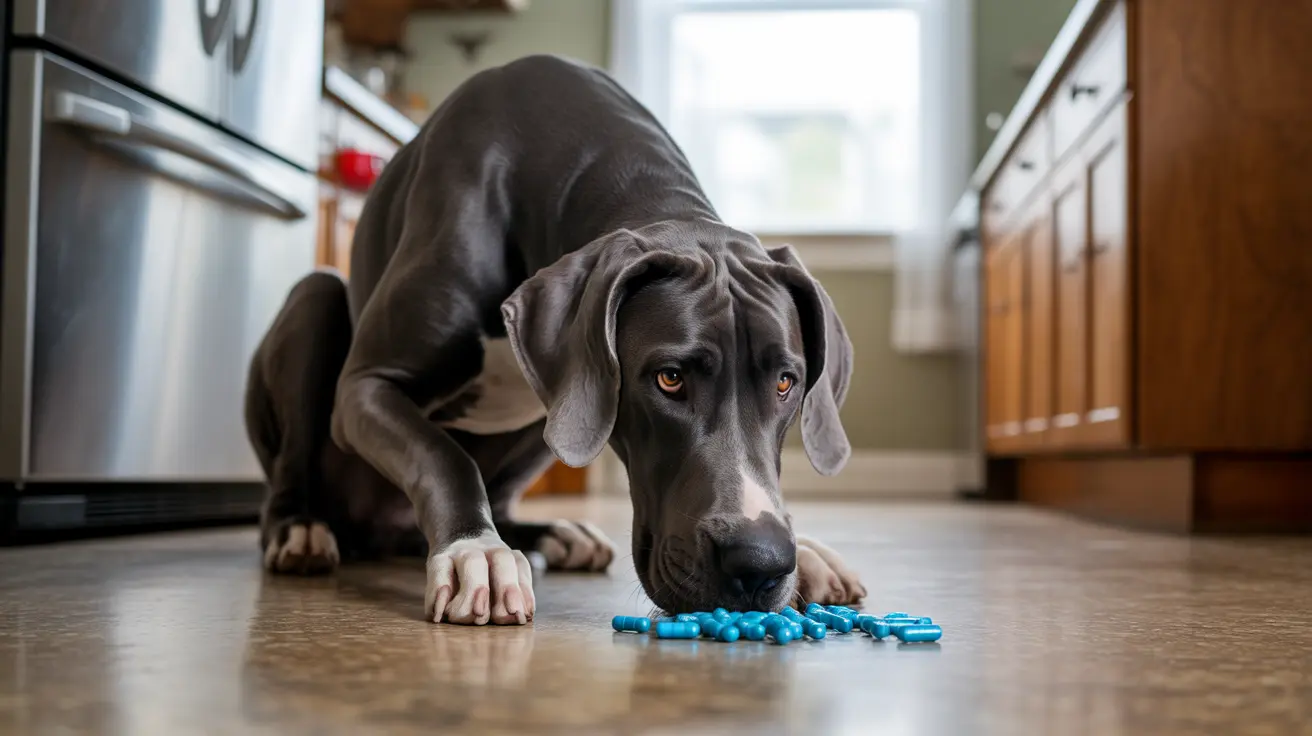Understanding Glucosamine and Its Role in Canine Health
Glucosamine is a naturally occurring compound that plays a vital role in maintaining healthy joint cartilage. Dogs produce glucosamine naturally, but production often decreases with age, leading many veterinarians to recommend supplementation, especially for senior dogs or breeds prone to joint issues.
The supplement comes in various forms, including tablets, soft chews, and powder, often combined with other joint-supporting ingredients like chondroitin sulfate and MSM. While beneficial in appropriate doses, these palatable supplements can pose risks if consumed in large quantities.
Signs and Symptoms of Glucosamine Overdose
Most cases of glucosamine overdose occur when dogs access and consume large quantities of supplements, particularly flavored varieties. Common symptoms include:
- Vomiting and diarrhea
- Lethargy
- Loss of appetite
- Increased thirst and urination
- Behavioral changes
In severe cases involving massive overdoses, more serious symptoms may develop:
- Liver and kidney dysfunction
- Blood clotting problems
- Neurological issues
- Severe metabolic disturbances
Treatment and Emergency Response
If you suspect your dog has consumed excessive amounts of glucosamine supplements, immediate action is crucial. Contact your veterinarian or emergency animal hospital, especially if your dog has ingested multiple supplements or is showing concerning symptoms.
Treatment typically involves:
- Detailed assessment of ingested quantity
- Blood work to check organ function
- Supportive care including IV fluids
- Monitoring for complications
- Specific treatments based on symptoms
Prevention Strategies and Safe Supplementation
Preventing glucosamine overdose is far easier than treating it. Key preventive measures include:
- Storing supplements in secure, pet-proof containers
- Following veterinary dosing guidelines strictly
- Keeping track of administered supplements
- Never leaving supplement bottles accessible to pets
- Regular veterinary check-ups to monitor supplement effectiveness
Frequently Asked Questions
What are the symptoms of glucosamine overdose in dogs and when should I contact my vet?
Contact your vet immediately if you notice vomiting, diarrhea, lethargy, or behavioral changes after glucosamine consumption. Any known ingestion of large quantities of supplements warrants immediate veterinary attention.
How much glucosamine is safe for my dog, and what happens if they eat too many supplements?
Safe dosage typically ranges from 15-30 mg per pound of body weight daily. Overconsumption can lead to digestive upset in mild cases, while severe overdoses can cause organ damage and serious health complications.
Can glucosamine overdose cause serious organ damage in dogs?
Yes, massive overdoses can lead to liver damage, kidney problems, blood clotting issues, and other serious complications. However, this typically only occurs with ingestion of extremely large quantities.
What should I do if my dog eats a large amount of glucosamine joint chews?
Contact your veterinarian immediately, note the quantity consumed and time of ingestion, and follow their guidance. Don't induce vomiting unless specifically instructed by a professional.
How can I prevent my dog from accidentally overdosing on glucosamine supplements?
Store supplements securely out of reach, maintain strict dosing schedules, and use a tracking system to prevent double-dosing. Keep supplements in their original containers and follow veterinary recommendations carefully.
Conclusion
While glucosamine supplements can be beneficial for dogs with joint issues, responsible use and proper storage are essential to prevent overdose incidents. By understanding the risks, recognizing symptoms, and implementing preventive measures, you can safely support your dog's joint health through supplementation. Always consult with your veterinarian about appropriate dosing and monitor your pet's response to ensure safe and effective supplement use.






